Homer Laughlin Experimental Cups and Saucers
LaurelHollowPark.net, an informative website created and
maintained by Mark Gonzalez. Copyright © 2009-.
|
|
Below are some examples of experimental cups and saucers made at Homer Laughlin in Newell, WV.
They are from the collection of The Fiesta® Tableware Company. Many of these are on dispaly at their museum at the factory outlet in Newell.
|
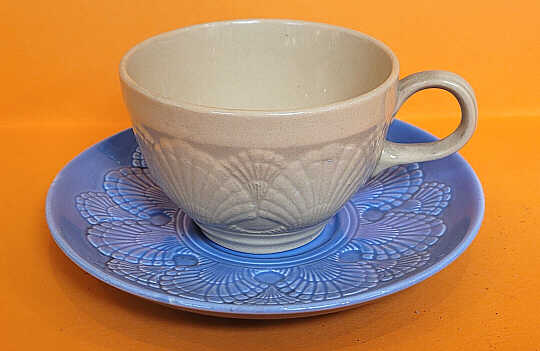 |
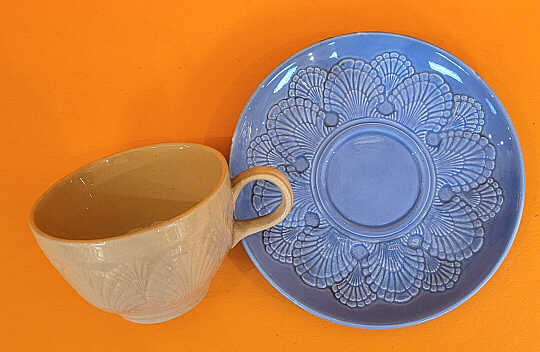 |
| The shell cup (model #641) and saucer (model #645) were modeled in July 1936 by Al Kraft. The cup shown is in a tan glaze and the saucer in Harlequin Blue. At least one other saucer is known to exist in maroon. Many of the odd cups and saucers were created as samples for Quaker Oats. The only two Quaker Oats cup and saucer sets that were accepted were Doric and Peachtree. They can be seen on this page.
|
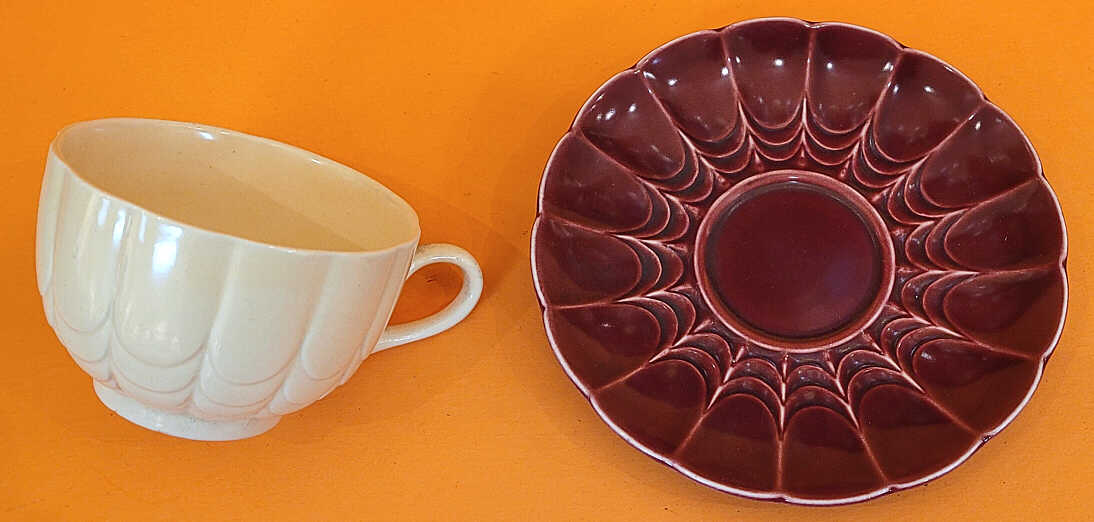 |
| The scalloped cup (model #708) and saucer (model #709) come from November 1936. Both were modeled by Bill Berrisford. The saucer was glazed in maroon and the teacup, which has its model number impressed on the bottom, was glazed in Century's vellum. |
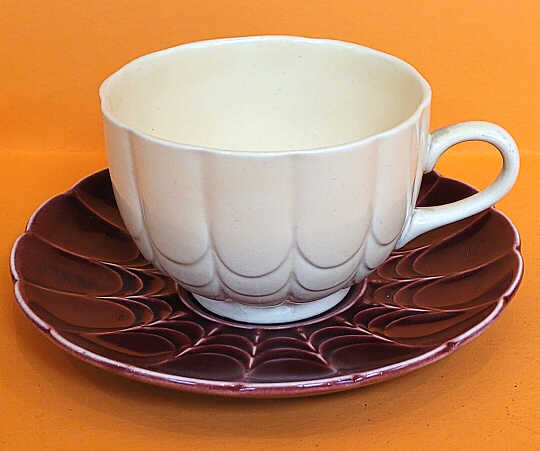
Scalloped cup and saucer. |
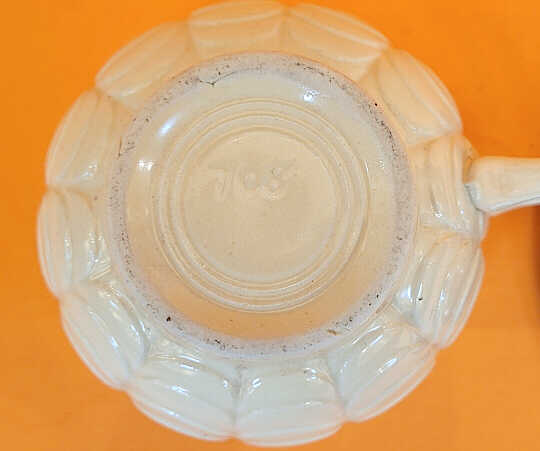
Scalloped cup with its model number. |
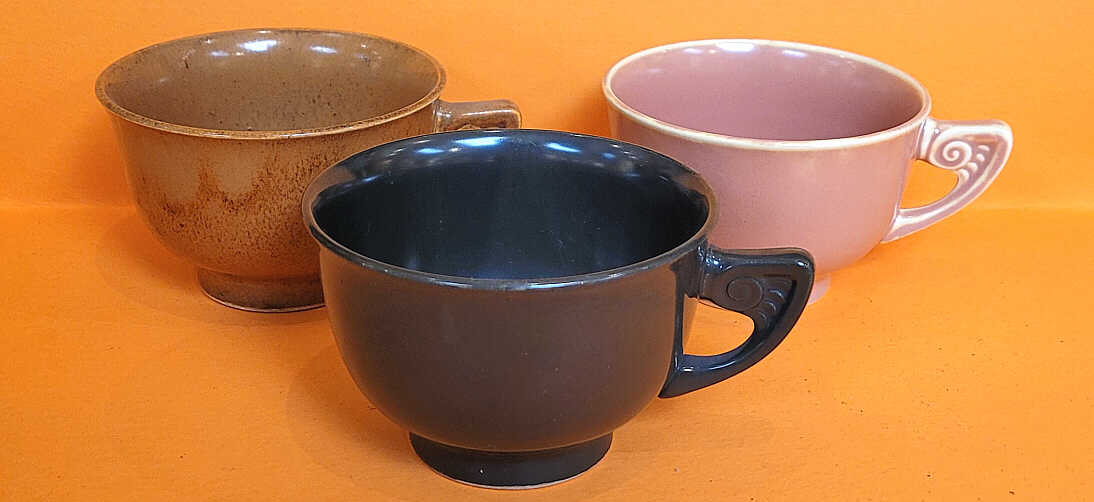
|
| Wells teacups were part of the standard Wells and Wells Art Glazes dinnerware assortments. The Wells example in the front was dipped in an experimental matte black glaze. The cups in the back were glazed in the standard art glazes Burnt Sienna (left) and French Rose (right).
|
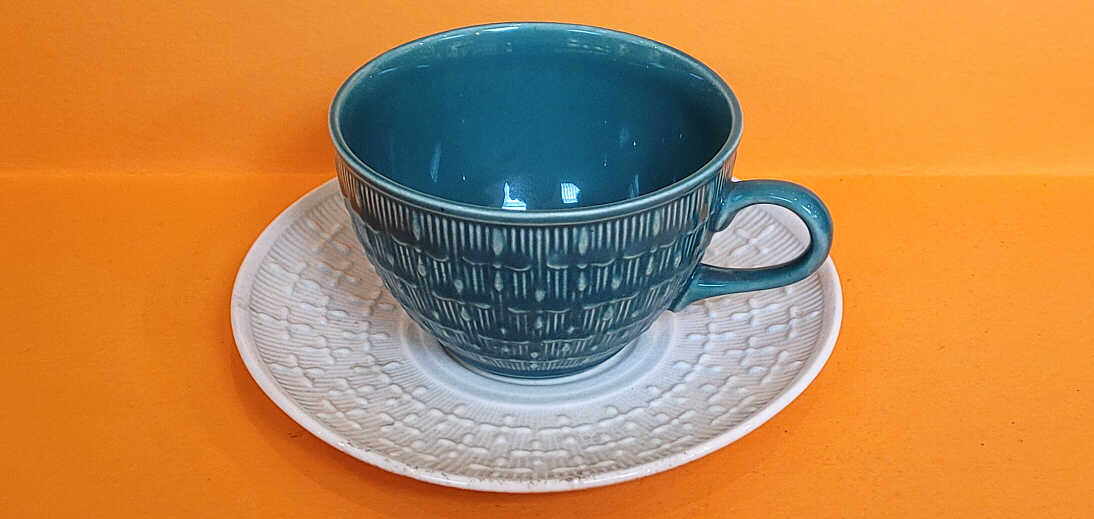
|
| This cup and saucer set was listed in company records as having, "ribbed flutes" and "crosses imposed". The teacup was glazed in spruce green and the saucer in white. Both pieces were modeled by Al Kraft at the end of November 1936. The teacup is model number 710 and the saucer, number 711.
|
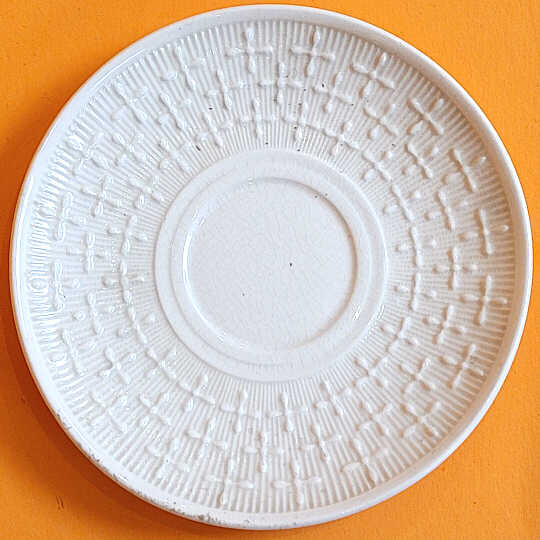
Ribbed flutes and crosses saucer in white |
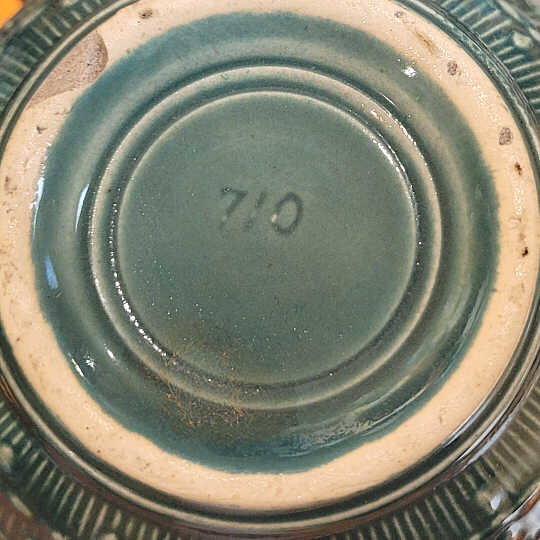
Model number on the bottom of the teacup |
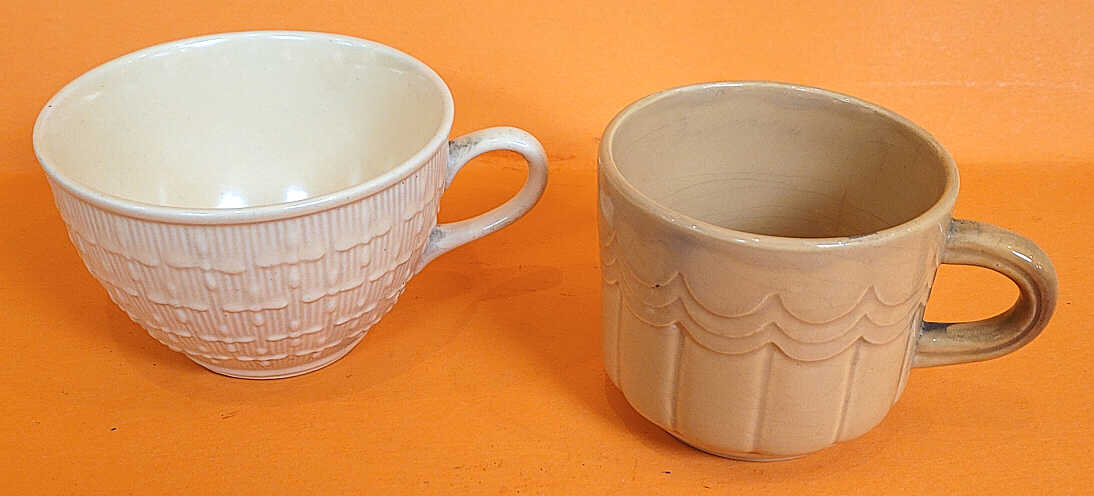 |
| Another example of the ribbed flutes and crosses teacup, this time in vellum. The cup on the right is model number 664 and was modeled by Al Kraft in August 1936. It was listed as a 5-oz. one fire cup. This example was glazed in an experimental tan color |
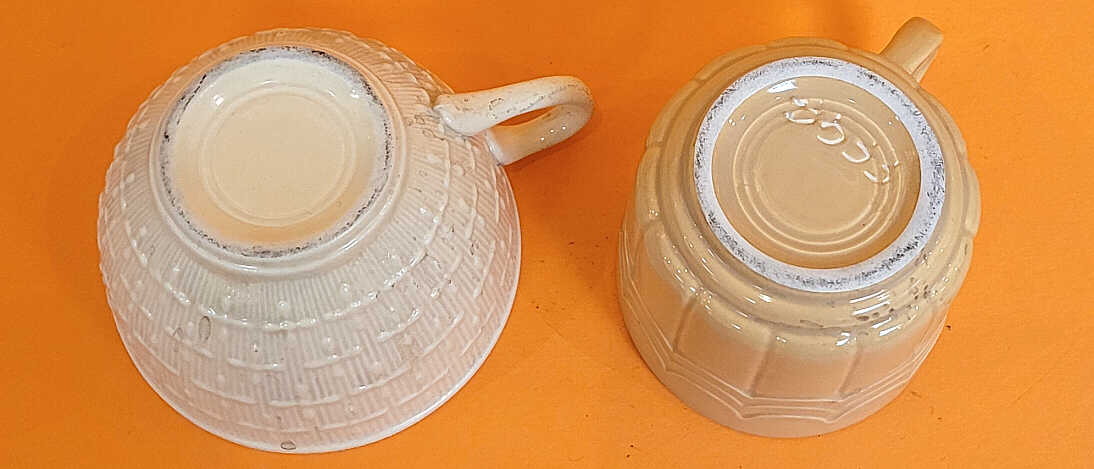 |
| Bottom view of the ribbed flutes and crosses teacup and the one fire cup. |
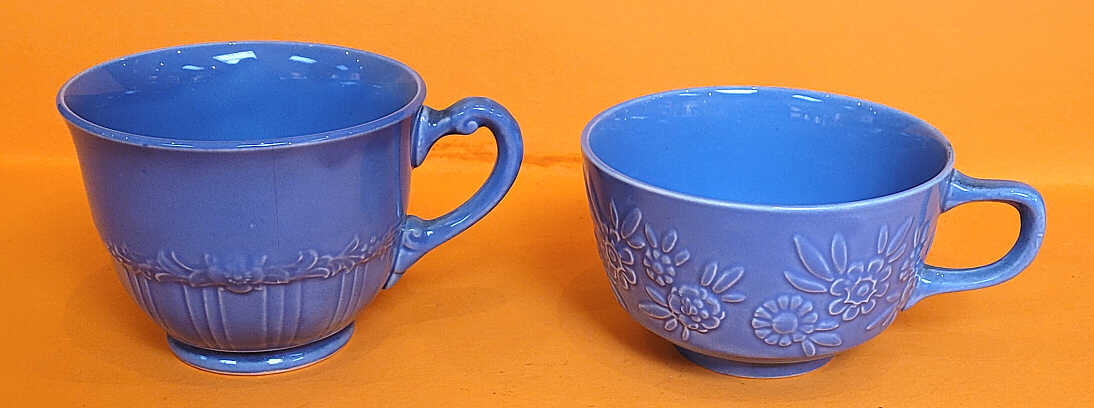
|
| On the left is a Coronet shape teacup in Harlequin blue. The cup is standard, but the glaze is experimental for Coronet. Also in Harlequin blue is the experimental teacup that was described as having "flower sprigs". It is model number 644 from July 1936. Its corresponding saucer (not shown) is model number 648. Both were modeled by Bill Berrisford.
|
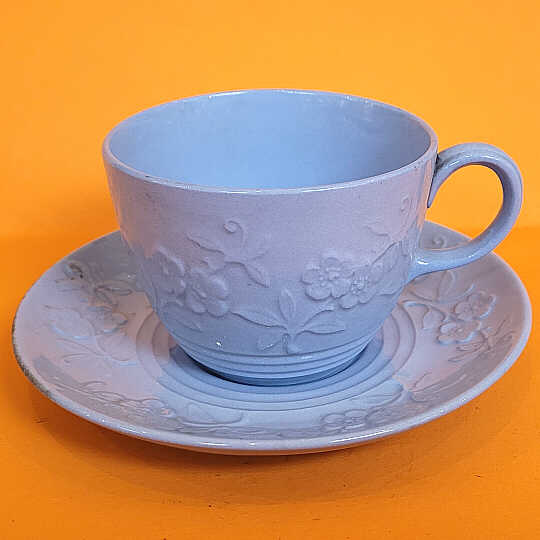
|
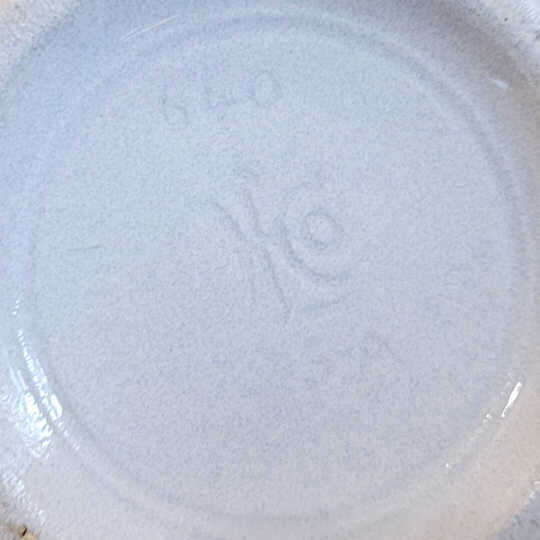
|
| This is the original design of the Peachtree cup for Quaker Oats. Listed as model 640, it was described as simply, "modeled flower pattern". The saucer is model number 639. Both pieces were by Al Kraft in July 1936. The revised Peachtree cup that went into production was made lower and wider. It was also modeled by Kraft in January 1937 as model number 750.
The photo to the left shows an impressed marking on the bottom of the cup with the model number up top, an HLC logo in the middle, and USA at the bottom. The "tall" Peachtree cup and saucer seen here were made using Kraft Blue clay and given a clear glaze. While the teacup was revised before going into production, the saucer was not.
|
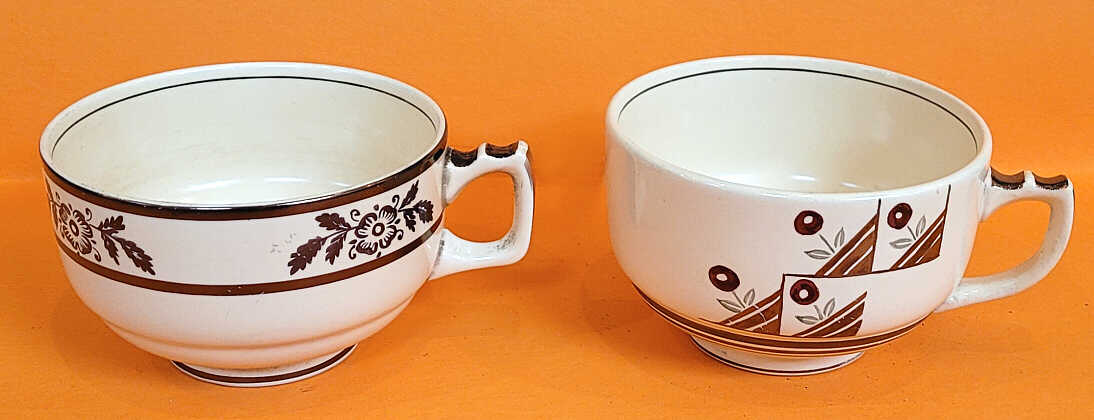
|
| Century shape cups. The example on the left has an alternate "square" handle that wasn't used. The one on the right has a standard handle, but the pattern is experimental. If you look closely, you can see the pattern on the body of the cup was hand-drawn.
|
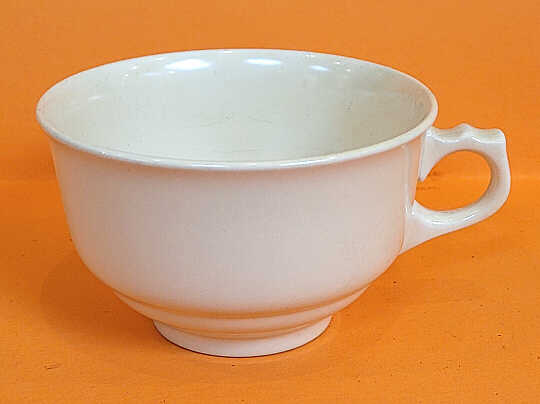
Alternate Century teacup body and handle, glazed in vellum. |
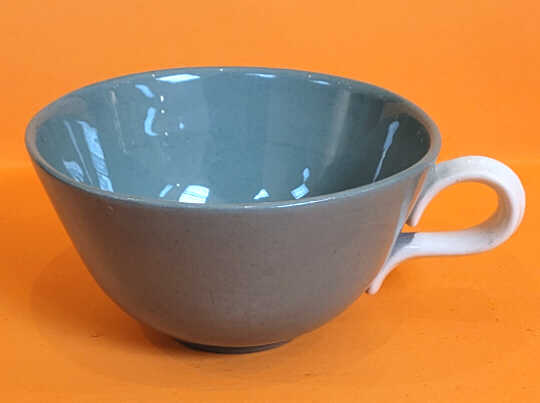
Meadowtone cup. See this page for more. |
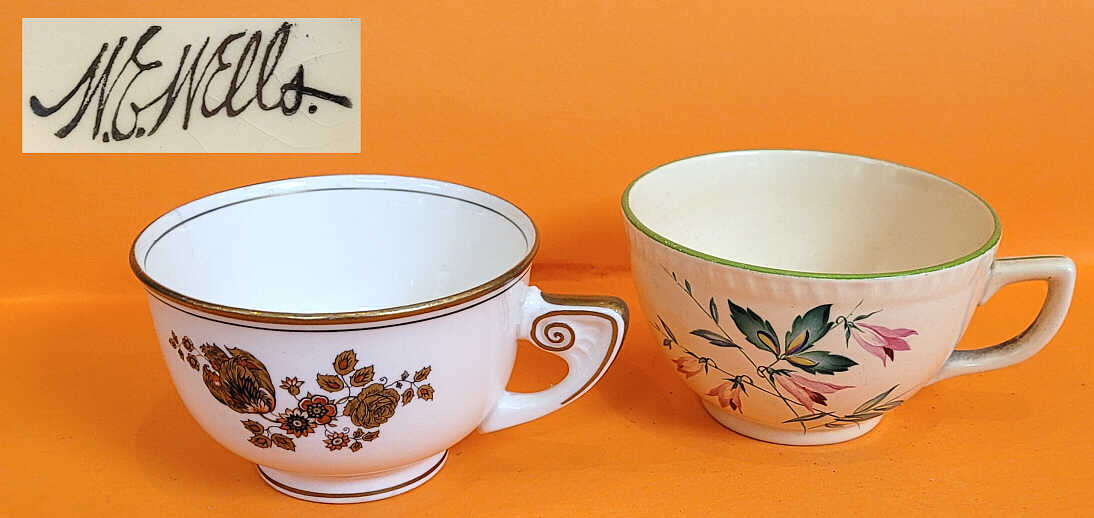
|
| Wells (left) and Newell (right) teacups. The Wells cup is unusual in that it was marked with William Edwin Wells' signature.
|
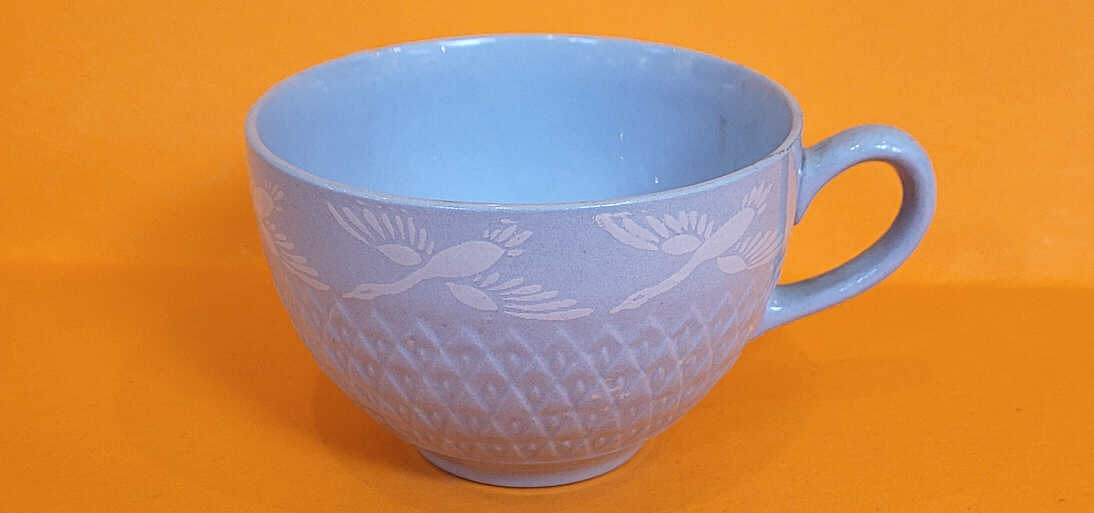
|
| Though unconfirmed, this is probably model number 518, the filigree cup from January 1936. It was made using the same blue clay from Kraft Blue and given a clear glaze. White geese decals were applied all around the top.
|
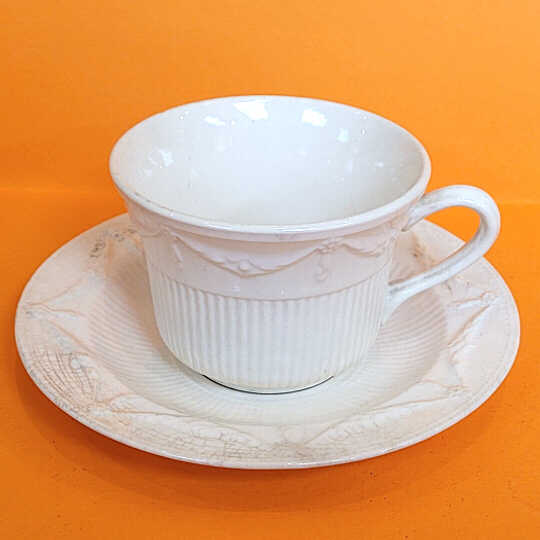
|
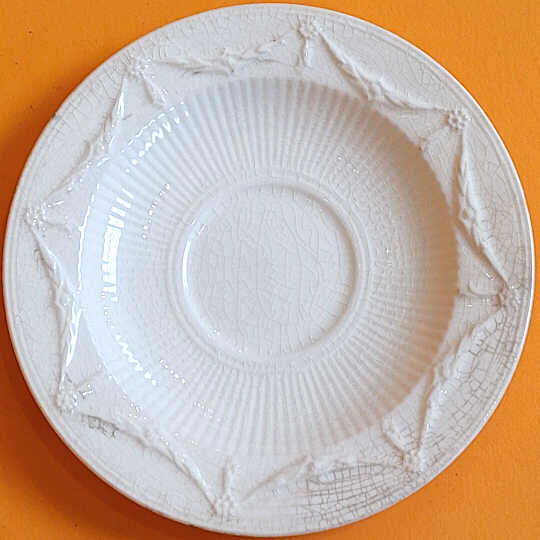
|
| The "fluted base with modeled festoon at top" cup and saucer were modeled by both Al Kraft and Bill Berrisford in July 1936. Kraft did the cup (model number 643) and Berrisford did the saucer (646). There were several versions of this style made. Some varied in height, shape, style of handles, and some had two handles.
|
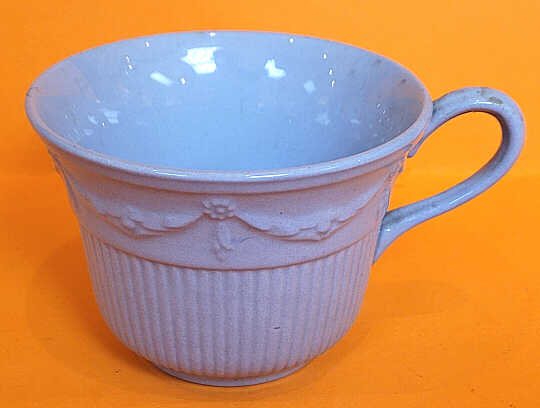
Flutted/festoon cup in Kraft Blue body |
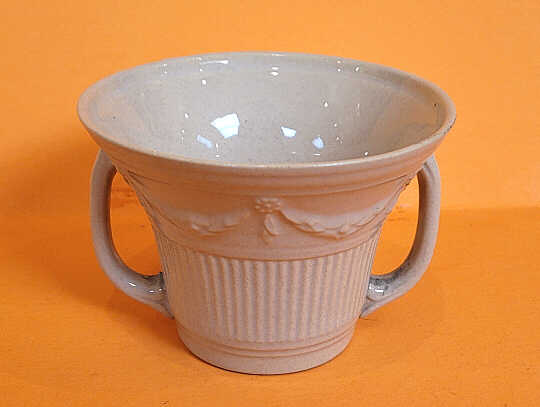
Two-handled cup in tan glaze. |
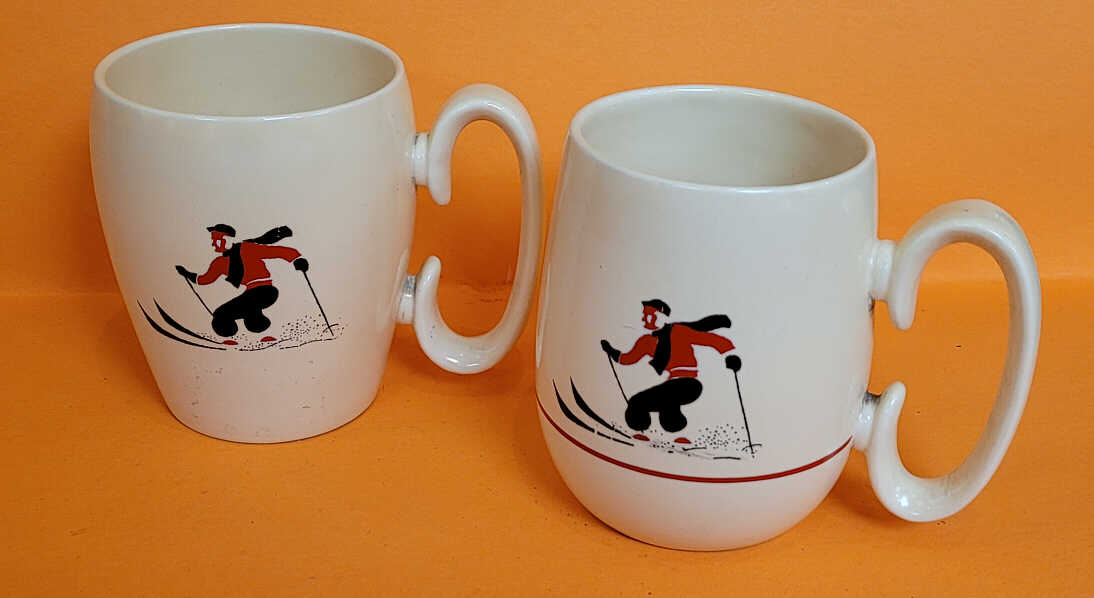 |
| Ski Mugs from September 1938. The one on the left (model 1124) was by Al Kraft and the example on the right (model 1125) was by Bill Berrisford. They were glazed in vellum and decorated with skier decals. The picture below shows the impressed model numbers. The "R" numbers are over the glaze and are reference numbers. R-8569 would have been listed with the ski decal, but R-8567 would have the ski decal with added red line in its listing. Had these gone into production, they would have gotten standard treatment numbers. |
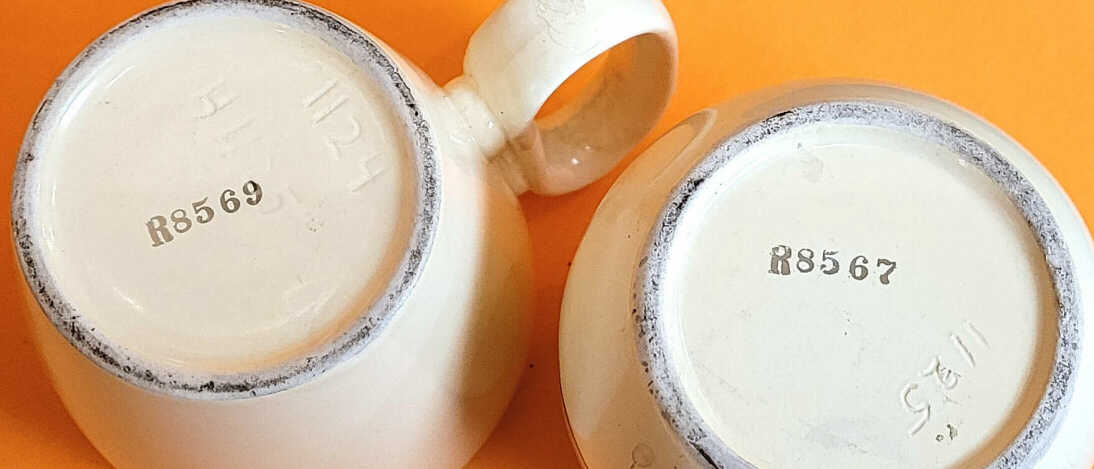
|
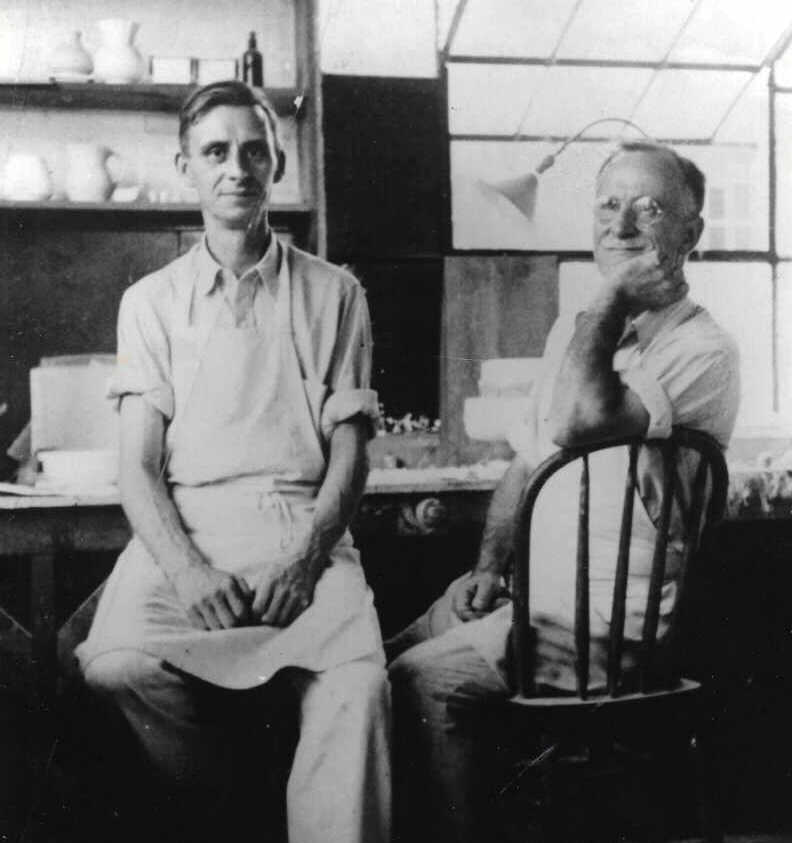 |
| Al Kraft and Bill Berrisford have been mentioned several times on this page. Here they are in an undated photo. Kraft is on the right, and Berrisford on the left. There is a Jewel Tea vase on the top shelf so this must have been taken sometime after the summer of 1937. Frederick Rhead was the art director at the pottery from 1927 until 1942. While he would come up with designs and assign them to be created, the modelers often played a significant part in the design. We as collectors tend to give most (if not all) of the credit to Rhead for the shapes made during his time. But the modelers should be mentioned as well. Not just Kraft and Berrisford, but also Bert Watkin (who modeled a number of Fiesta pieces) and Garvin Miller (some New York World's Fair items).
|
|
|